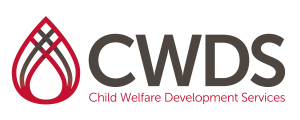CWDS Curriculum
Understanding Behavior in Adolescents with Trauma Histories
Level: Advanced Practice – Lineworker, Supervisor,
Credits: 6
Intended Audience: New and current social workers and supervisors
Intended Objectives:
- Review attachment theory and brain development, leading to a clearer understanding of behavior – for those raised in nurturing families, and for those who have experienced chronic trauma (abuse and neglect). Focus will be on adolescent behavior.
- Identify physical and social-emotional development milestones for ‘typically
developing’ adolescents. - Review historical and current thinking with regard to behavior management.
- Identify Adlerian-based theory of behavior management and discipline.
- Discuss why many traditional and current methods of behavior management and discipline are ineffective with teens who have experienced chronic trauma.
- Identify techniques that will assist birth parents, as well as other caregivers in the use of more effective behavior management tools, specific to adolescence.
Topics Include:
- Cultural beliefs on behavior management
- Brain development with focus on the adolescent brain
- Trauma’s effect on the developing adolescent
- Behavior management tools to build relationship and brain structure in teens
CalSWEC Competencies Addressed:
1.6 Student understands the influence and value of traditional, culturally based childrearing practices and uses this knowledge in working with families.
3.3 Student is able to identify the major family, health, and social factors contributing to child abuse and neglect, as well as positive factors that act to preserve the family and protect the child.
3.5 Student demonstrates an understanding of basic child development and how developmental level affects a child’s perception of events, coping strategies, and physical and psychological responses to stress and trauma.
3.9 Student demonstrates the ability to engage and work with involuntary cliens in a manner that includes the exercise of client self-determination.
3.10 Student understands how attachment, separation and placement affect a child and family and how these experiences may influence a child’s physical, cognitive, social and emotional development.
5.5 Student demonstrates understanding of how the strengths perspective and empowerment approaches can positively influence growth, development, and behavior change.
6.2 Student can apply theories of human development and attachment in creating and managing effective case plans with clients.
6.3 Student demonstrates understanding of the dynamics and effects of trauma resulting from family conflict, divorce, and family or community viole
Posted In:Independent Living Skills & Youth
Mental Health & Behavioral Health



